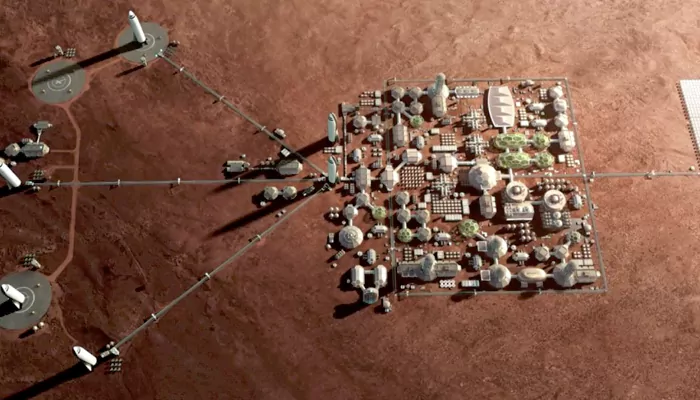Gateway to the Red Planet: Earth-Mars Transfer Window Opens October 2024
- Soham Halder
- 1 year ago
- 4 minutes read

Scientists are getting closer to manned Mars mission!
Mars remains the goal for exploration because it is one of the only other planets where life might have existed in the entire solar system, according to NASA. Even the richest man in the world, Elon Musk has been planning to make human, a multi-planet civilization! The SpaceX CEO once stated that “biggest hope is Mars”. NASA and SpaceX have accelerated the efforts to manufacture space transportation technologies recently with a hope of uncrewed Mars mission by the end of this decade. Meanwhile, these interplanetary travel is dependent on certain factors. The next ‘optimal time’ or Earth-Mars transfer window is about to open in October 2024. In this article, we will discuss about importance of this window and upcoming missions.
A short video on my favorite type of orbital transfer, the Hohmann Transfer Orbit. It is the most fuel efficient way to get from #Earth 🌎 to #Mars #orbitalmechanics pic.twitter.com/JqFlpViJHM
— Just Rocket Science (@justrocketsci) September 19, 2023
(Credit - X/@justrocketsci)
Earth-Mars Transfer Window:
This is a vital element in space exploration for determining the ‘optimal time’ of spacecraft launch from Earth to Red Planet. This transfer window follows the principle of the Hohmann transfer orbit, an ‘orbital maneuver’ for transferring any spacecraft between two orbits of different altitudes around a central body (the sun).
Generally, this specific window becomes accessible approximately every 26 months. Any space travel prefers to follow the most energy-efficient interplanetary path. This shortest path consume less amount of fuel for traveling. The specific period ensures more precise and controlled landing. Thus, space agencies plan meticulously beforehand as unsuccessful attempt will lead to another two-year delay. This limited timeframe also puts various challenges on mission readiness including weather conditions at the launch area.

(Credit - X/@SPACEdotcom)
Previous & Upcoming Missions:
In 2022 transfer window, multiple cargo launches were conducted which are essential for future Mars missions.
With the recent success of Polaris Dawn through highest altitude travel and spacewalk, SpaceX is more confident about upcoming missions. As per planning, the company will launch first uncrewed Starship Super Heavy to the red planet during the 2026 transfer window. This is the biggest and most powerful rocket ever built in space science history.
Elon Musk's Vision:
While sharing his ambitious goal in an interview, Elon Musk predicted to carry “around 20 million people to be living on the planet within 20 years.”
Gateway to Mars pic.twitter.com/cej13QdyJP
— SpaceX (@SpaceX) October 23, 2021
(Credit - X/@SpaceX)
"The first Starships to Mars will launch in 2 years when the next Earth-Mars transfer window opens. These will be uncrewed to test the reliability of landing intact on Mars. If those landings go well, then the first crewed flights to Mars will be in 4 years," Musk also announced.
Preparations for Mars Mission:
NASA is preparing complete life support systems to regenerate consumables including food, air, and water to survive on Mars. “The Mars Oxygen In-Situ Resource Utilization Experiment, or MOXIE, is helping NASA prepare for human exploration of Mars by demonstrating the technology to produce oxygen from the Martian atmosphere for burning fuel and breathing,” NASA website mentioned.
For the crewed mission to the Mars, scientists are planning to use laser communications system to send large amounts of real-time data including high-definition images. Meanwhile, the first traveler to the Mars would be a woman as female body need significantly fewer resources for a long-duration space travel than men.
Starship will help enable humanity’s return to the Moon and ultimately send people to Mars and beyond pic.twitter.com/xNb6qTPTp5
— SpaceX (@SpaceX) December 29, 2023
(Credit - X/@SpaceX)
The average distance between Earth and Mars is approximately 140 million miles or 225 million km. For a successful one-way trip to the Mars, it will take at least 9 months, whereas a round-trip would be completed in 21 months.
As we are advancing towards frequent space mission in coming days with a long-term planning of building a sustained human presence on the Red Planet, October 2024 window will play an important role.



.webp)
.WEBP)
.WEBP)
.webp)
.webp)


.webp)
.webp)
.webp)